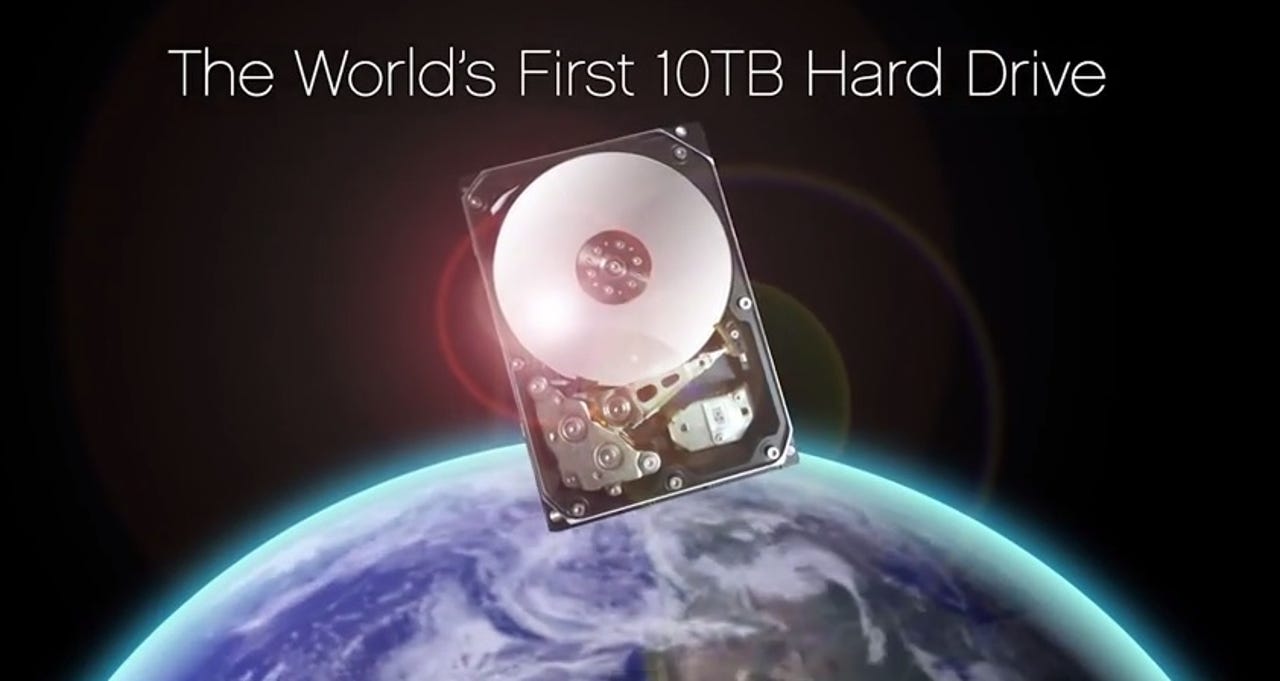HGST's new 10TB drive: Not for everyone


How they do it
Areal density increases are coming slowly as the drive industry gears up for patterned media and heat-assisted magnetic recording. Both require large investments before mass production.
Instead, the new drive uses shingled magnetic recording (SMR) and HGST's proprietary - and industry leading - HelioSeal helium drive platform to drive capacity. Get used to hearing about SMR, because it's going to be with us from now on.
Writing takes a lot of energy and lays down a broad track, while reads work well with narrow tracks. SMR borrows techniques from flash drives - where writes are also costly - to partly overwrite successive tracks, maintaining narrow read tracks - thus "shingling".
As you'd expect, the SMR requirement that entire tracks be written means that SMR drive aren't good for frequent update workloads. That's why this drive is aimed at active archive workloads.
SMR is different enough that HGST is offering a Linux-based SDK so integrators can optimize their software for the SMR command set. They also note:
Based on host-managed shingled magnetic recording (SMR) technology, the Ultrastar Archive Ha10 is not a drop-in replacement for traditional capacity enterprise drives.
Host-managed SMR design considerations:
- Active Archive apps with sequential write workloads
- Ability to modify your software stack
- Linux OS (or select open-source OS)
Seagate has been shipping intelligent SMR drives - the disk controller handles the SMR overhead - for a couple of years. But combining SMR with HelioSeal is HGST's clear differentiator.
Helium is a fraction of the density of sea-level atmosphere, so there's a fraction of the air resistance and turbulence. That makes helium drives more energy efficient and allows seven thinner platters in the space current drives need for five platters.
The Storage Bits take
SSDs have eviscerated the high-end drive market, where the margins were fat and the demand steady. SSDs own the performance market, so hard drives have to go with what they do best: capacity.
The 10TB drive is aimed at cloud and enterprise bulk storage, not the transactional workloads that SSDs now own. Since most data only gets looked at a few times, marketers are pushing the "active archive" model to justify continued disk drive purchases.
SMR in particular is well suited to consumer use: how often do you update all your music and photos? But Seagate's disk-based SMR controller makes more sense for consumers.
The larger message is simple: disk drives will be around for decades to come. We've been using tape for over 60 years, and disks are more popular than tape ever was. Here's to continued drive capacity growth!
Comments welcome, as always.
The 11 best high-performance storage devices